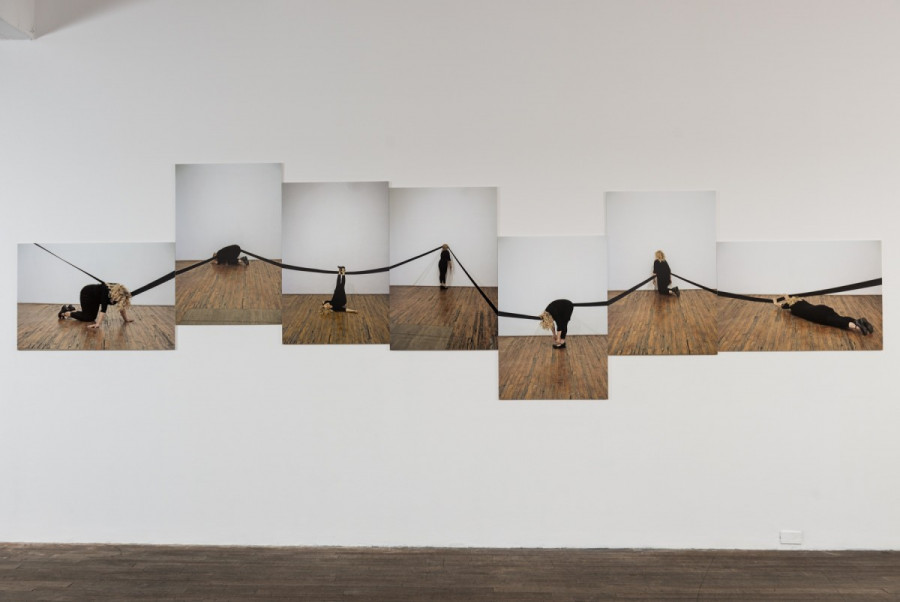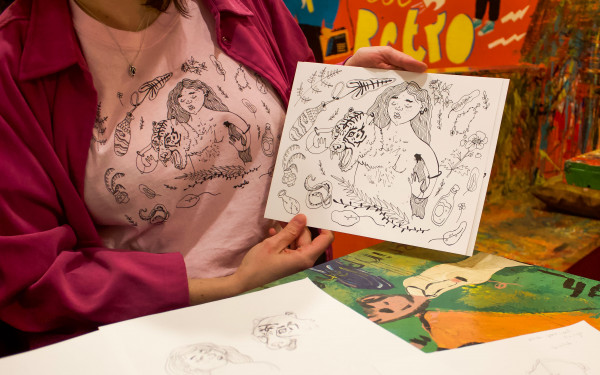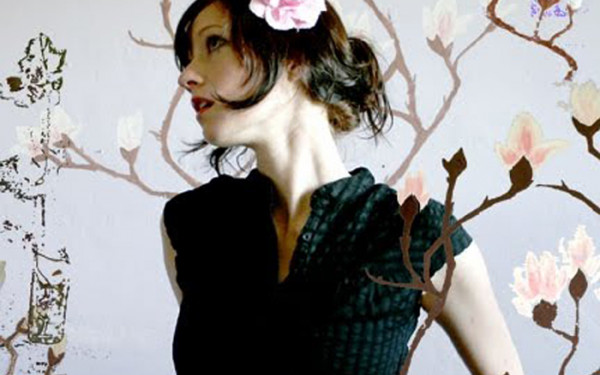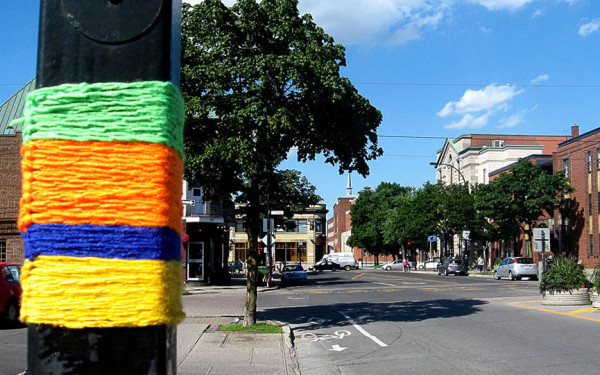Softening The Borders
Multimedia Artist Explores How Boundaries Define the Human Experience
Artist Vessna Perunovich has a lot of experience with borders. Having lived in Canada for the past 25 years, the artist fled her birthplace Yugoslavia, a country on the brink of civil war, during the 1980s. It’s fitting to say that the artist uses visual art and performance to explore her past and the world around her.
Perunovich’s exhibit Border Stitching is now visiting Montreal at the Oboro and runs until Feb. 16. Perunovich explores the subjects of limitations, borders and boundaries. Her work starts from her personal experiences with limitations and spreads to broader contexts to understand what borders mean.
Immigration and displacement are some of her primary themes. Understanding the senses of borders allows her to grasp the commonalities amongst human beings.
The exhibition features many mixed-media installations, from interactive video-sculptures to more traditional drawings, paintings, and photographs. Her art has been displayed around the world, from Cuba, Greece and Albania to her home country of Yugoslavia.
“This is a very universal theme. Borders and boundaries mean something, even in the era of technology when we think we’ve connected with the whole world,” said Perunovich. “Borders, real physical borders, are still important to so many people and nationalities. It’s something that defines people; people are ready to go and fight for those borders. In a way that’s the inspiration for this work.
“In the exhibition you will see a display of many different mediums. You will see drawings, you will see a lot of book works that I did over a long period of time, both expressing my own feelings and looking at books as an ideological tool,” Perunovich continued. “You will see video and sculpture installations in the corner of the space that you can actually experience as the video is projected through that structure. In the video, I am walking in circles in the snow, and the audience is repeating my movements and mirroring what I’m doing. On the walls there are pieces that are more tactile and made of zip ties and you will also see a series of photo-based work.”
Through the use of continuous lines of ink, thread and graphite, Perunovich reinvents barriers such as walls and fences and represents them as soft configurations and woven, permeable structures. Perunovich bases her art on her personal experience with migration and crossing both literal and figurative borders, but she hopes the exhibition will give pause to consider more general examples of boundaries and connection.
“In this body of work you can see a little bit of a playful approach to what ‘boundary’ can mean, because I use materials that are flexible and elastic, that can stretch and be transformed. In a way I’m trying to say that borders can be transparent, they can be moved and they can be broken,” said Perunovich.
“It’s the continuation of my concern and subjects that interest me. What defines us as human beings? What connects us? Not what makes us different, but what are the ways we live that are common to everyone? It’s a mix of different mediums, but they all talk about borders and lines and how they intersect and define our human experience.”
The architectural form of a wall or a fence is reproduced through processes that make reference to female practices such as sewing, knitting and crocheting. By using materials and techniques which were historically designed as “female,” which run counter to our technology-information saturated age, the work stitches together the division between traditional women’s needle work and fine arts.
The interplay between construction and craft in Perunovich’s work also renegotiates the traditional gender stereotypes as defined by her Serbian heritage enacted through her immigration from one cultural context to another.
“We are fragile as human beings but we also need to be connected and in touch with each other. I would like people to realize their own limitations and also see how they can be breached,” she said.
Border Stitching // Jan. 17—Feb. 16 // Oboro (4001 Berri St.) // Tuesday to Saturday 12 p.m. to 5 p.m. // Free




_600_832_s.png)




